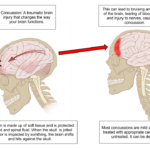Physiotherapy Treatment Protocol for Rotator Cuff Tendinitis
Overview of Conditions:
Rotator cuff tendinitis is an inflammation or irritation of the tendons in the rotator cuff muscles, typically resulting from overuse or repetitive overhead movements. It can occur acutely after a traumatic injury or develop gradually over time due to degenerative changes, improper posture, or excessive physical activity. Common symptoms include localized pain, particularly with overhead motions, weakness, and restricted range of motion (ROM). It is most often seen in athletes, workers performing overhead tasks, or individuals with poor shoulder mechanics.
Etiology:
- Overuse: Repetitive overhead motions or heavy lifting, common in athletes (e.g., baseball, swimming) or manual laborers.
- Aging: Degeneration of tendon fibers and blood supply, leading to microtears and inflammation.
- Trauma: Acute injury such as a fall or sudden strain may trigger tendonitis.
- Postural Impairments: Poor posture, especially forward head and rounded shoulders, leading to abnormal scapular kinematics and increased stress on the rotator cuff tendons.
Commonly Affected Tendons:
- Supraspinatus tendon: Most commonly affected tendon due to its location and function in abduction.
- Infraspinatus and Teres Minor Tendons: These may also be involved, particularly in cases of chronic tendinopathy.
Assessment and Evaluation:
- History:
- Pain Onset: Inquire about the duration and onset of pain (acute vs. chronic). Pain often worsens with overhead activities and night sleep.
- Mechanism of Injury: Identify any repetitive activities, trauma, or sudden increase in physical load.
- Functional Limitations: Assess difficulty in overhead motions (e.g., reaching, lifting) and ADLs.
- Pain Assessment:
- Use the Visual Analog Scale (VAS) or Numeric Pain Rating Scale (NPRS) to assess pain severity.
- Pain Pattern: Pain usually worsens with active abduction, external rotation, and overhead movements, and may present as a dull ache.
- Physical Examination:
- Postural Evaluation: Assess shoulder posture, noting any scapular dyskinesis (e.g., winging or shrugging) or altered scapulohumeral rhythm.
- Range of Motion (ROM): Check for painful arc between 60-120 degrees of abduction (common in rotator cuff tendinitis).
- Strength Testing: Assess the strength of the rotator cuff muscles, particularly supraspinatus, infraspinatus, and subscapularis.
- Special Tests:
- Neer’s Test: To assess for impingement.
- Hawkins-Kennedy Test: To assess for supraspinatus tendon impingement.
- Empty Can Test: To assess for supraspinatus weakness.
- Drop Arm Test: For rotator cuff tear (if suspected).
Goal Setting:
Short-Term Goals:
- Reduce pain and inflammation (VAS ≤ 3).
- Improve passive ROM, particularly in flexion, abduction, and external rotation.
- Decrease muscle spasms and stiffness in the shoulder.
- Restore functional mobility to perform basic ADLs (e.g., dressing, reaching, and lifting).
Long-Term Goals:
- Achieve full active and passive shoulder ROM.
- Strengthen the rotator cuff and scapular stabilizers, focusing on supraspinatus, infraspinatus, and teres minor muscles.
- Improve functional capacity, including overhead activities, lifting, and reaching.
- Prevent recurrence of symptoms by addressing the underlying biomechanical factors such as postural imbalances and movement patterns.
Recommended Treatment:
Electrotherapy:
- Transcutaneous Electrical Nerve Stimulation (TENS):
- Indication: Pain relief, muscle relaxation, and reduction of inflammation in the acute phase.
- Parameters:
- Frequency: 80-120 Hz.
- Intensity: Comfortable, sub-threshold for pain relief.
- Pulse Width: 100-300 µs.
- Duration: 20-30 minutes, 2-3 times per day.
- Mechanism: TENS stimulates sensory fibers to reduce pain perception, increase blood flow, and promote tissue healing.
- Interferential Therapy (IFT):
- Indication: For deeper tissue penetration and pain relief in chronic tendinitis.
- Parameters:
- Frequency: 4,000 Hz carrier frequency, modulated at 80-150 Hz.
- Duration: 20-30 minutes.
- Mechanism: IFT promotes circulation, reduces muscle spasms, and enhances tissue healing in deeper structures.
- Class 4 LASER Therapy:
- Indication: To accelerate tissue healing, reduce pain and inflammation, and improve tissue repair.
- Parameters:
- Wavelength: 800-900 nm.
- Power: 5-10 W.
- Duration: 5-8 minutes per treatment area.
- Mechanism: LASER therapy increases cellular metabolism, enhances collagen production, reduces inflammation, and stimulates tissue regeneration.
- Ultrasound Therapy:
- Indication: To reduce pain, promote tissue healing, and improve tendon elasticity.
- Parameters:
- Frequency: 1 MHz (for deeper penetration).
- Intensity: 0.5-1.0 W/cm².
- Duration: 5-10 minutes per treatment area.
- Mechanism: Ultrasound promotes collagen synthesis, reduces tissue stiffness, and enhances blood flow, aiding in tendon repair.
Thermotherapy:
- Cryotherapy (Cold Therapy):
- Indication: To reduce pain, inflammation, and swelling in the acute phase of tendinitis.
- Application: Apply ice packs or cold gel packs for 10-15 minutes, ensuring a barrier (e.g., towel) between the skin and ice to prevent frostbite. Alternatively, use an ice massage over the affected area for 5-10 minutes.
- Mechanism: Cryotherapy reduces blood flow to the affected area, limiting the inflammatory response and reducing pain and swelling. It can also help numb the area, providing pain relief.
- Moist Heat Packs:
- Indication: For pain relief and muscle relaxation during the subacute and chronic stages.
- Application: Apply heat for 15-20 minutes to relax tight muscles and improve circulation.
- Mechanism: Heat enhances blood flow, reduces muscle spasm, and increases tissue extensibility, which helps in pain relief and healing.
Manual Therapy:
- Myofascial Release:
- Indication: To release trigger points and tight fascia in muscles affected by the tendinopathy (e.g., upper trapezius, infraspinatus).
- Technique: Apply sustained pressure on the affected muscles to reduce tightness and improve soft tissue mobility.
- Mechanism: Myofascial release relaxes muscle tissue, reduces pain, and increases mobility, aiding in the recovery process.
- Muscle Energy Techniques (MET):
- Indication: To increase muscle length, improve joint mobility, and reduce muscle tension.
- Technique: Isometric contractions followed by a stretch to the restricted muscle group, focusing on the rotator cuff muscles.
- Mechanism: MET works through autogenic inhibition, allowing the muscle to relax and lengthen, facilitating recovery and reducing tension.
Exercise Therapy:
- Range of Motion (ROM) Exercises:
- Exercise: Begin with passive ROM exercises, such as pendulum swings and wall climbing.
- Duration: 5-10 repetitions, 3-4 times per day.
- Mechanism: ROM exercises maintain joint mobility, prevent adhesions, and reduce stiffness in the shoulder.
- Strengthening Exercises:
- Exercise: Isometric and isotonic strengthening of the rotator cuff, particularly supraspinatus, infraspinatus, and subscapularis.
- Reps: 10-15 repetitions, 2-3 sets per day.
- Mechanism: Strengthening the rotator cuff and scapular stabilizers reduces the load on the tendon, promoting healing and preventing recurrence of tendinitis.
- Scapular Stabilization Exercises:
- Exercise: Focus on strengthening the scapular stabilizers (serratus anterior, rhomboids) to improve shoulder mechanics and prevent abnormal stress on the rotator cuff.
- Reps: 10-15 repetitions, 3 sets per day.
- Mechanism: Improved scapular stability reduces compensatory movements, which helps to protect the rotator cuff tendons during functional tasks.
- Functional Exercises:
- Exercise: Gradual return to overhead and lifting movements, starting with resistance bands and progressing to weights.
- Reps: 10-15 repetitions, 2-3 sets per day.
- Mechanism: Functional exercises help restore the strength and coordination needed for tasks such as lifting, reaching, and throwing.
Precautions:
- Electrotherapy:
- Avoid electrotherapy in patients with pacemakers, implanted electronic devices, or during pregnancy.
- Use caution in areas with acute inflammation or open wounds.
- Thermotherapy:
- Avoid applying heat immediately after acute injury (first 48 hours) to prevent exacerbating inflammation.
- Ensure heat is at a safe and comfortable temperature to avoid burns.
- Cryotherapy: Ensure proper skin protection during cold therapy to avoid frostbite.
- Exercise Therapy:
- Avoid exercises that cause pain or exacerbate symptoms.
- Ensure proper form during strengthening exercises to prevent additional strain on the rotator cuff.
- Manual Therapy:
- Be cautious with deep tissue manipulation or mobilizations in acute cases to avoid aggravating symptoms.
- In chronic cases, ensure soft tissue techniques are not too aggressive.
Reassessment:
- Frequency: Every 2-3 weeks.
- Criteria for Progression: If pain is reduced (VAS ≤ 3) and ROM improves by 60-80%, progression to strengthening exercises is appropriate. If no improvement is noted, reassess for alternative diagnoses (e.g., rotator cuff tear).
- Change in Care Plan: If symptoms worsen or fail to improve, referral for further imaging (e.g., MRI) may be necessary to rule out structural damage or impingement syndromes.
Disclaimer:
Treatment options must be chosen wisely and appropriately. For example, where multiple options are recommended, any one option can be selected based on availability and appropriateness, such as in electrotherapy. Always consult a qualified healthcare provider before beginning any treatment protocol.
This content is for informational purposes only and should not replace professional medical advice.






